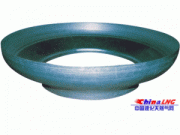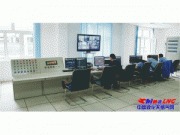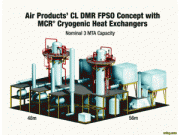<iframe style="display:none" id="tanx-a-mm_10048903_1420406_11218700" marginheight="0" frameborder="0" marginwidth="0" scrolling="no">
Two LNG concepts have won an Approval in Principal from the American Bureau of Shipping (ABS). One is a novel concept from ABB Lummus Global (ABB) for a liquefied natural gas and liquefied petroleum gas, floating production storage and offloading unit (Niche LNG FPSO). The concept is the offshore application of the NicheLNG SM process, a proprietary dual turbo-expander-based LNG liquefaction scheme. The equipment layout is similar to a typical FPSO, however, it allows for onboard processing which incorporate both the gas feed pretreatment (removal of C[O.sub.2], mercury etc., dehydration of the gas and LPG extraction) and LNG liquefaction.
LNG and LPG have different compositions that require storage at different temperatures. LNG must be stored at extremely low temperatures (-162 degrees C) while LPG can be stored at a much higher or warmer temperature (-40 degrees C).
Described by ABB as primarily a floating liquefaction facility for LNG production, storage and export, its process facilities are compact enough to fit onto the deck of a 312-meter-long Niche LNG FPSO, yet capable of delivering 1.5 million tons per year combined output from its three LNG production trains. The design storage capacity is in the 200,000 m3 range, with six tanks total--four for LNG storage and two for LPG storage. The design features a flat deck, making it easier to arrange and accommodate the topside process modules.
According to ABS Project Manager Phil Rynn, the uniqueness of the proprietary liquefaction process from ABB on the vessel required close review. The 'dual turbo-expander cycle' to chill the gases to a liquid Form for transport involves cooling and condensing the methane rich stream available from the gas pre-treatment step. Gas is liquefied in two independent cycles, using methane as refrigerant for the first stage, and then moving to nitrogen, with both cycles adopting turbo-expanders. These refrigerants are always in gas phase, which simplifies the equipment layout compared with traditional LNG refrigeration systems.
"Since there is a complete LNG process plant onboard which also incorporates LPG extraction facilities, there are more equipment concerns with regard to spacing and general arrangements," Rynn said. During preliminary design review of all the drawings, he said special attention was given to the process facilities, general arrangements, cryogenic transfer and facilities for loading and offloading the LNG and LPG products, as well as in-service inspection and security issues for the design.
"Industry has successfully dealt with oil and gas processing facilities on Floating Production Storage Units for a number of years. However, the liquefaction and cryogenic storage of LNG and LPG offshore is a whole new arena," said ABS Vice President of Energy Development William J. Sember. "This transition requires a comprehensive approach toward the integration of marine and typically shore-based gas processing facilities in the design of a floating concept," he said. "A key issue for a floating concept like this is designing for the relative motions likely to occur during loading/offloading operations."
Transfer of LNG at subzero temperatures through a loading hose or arm presents industry with a technological challenge. ABS is working with industry to eva luate appropriate technologies to optimize reliability and flexibility for the LNG transfer in an offshore environment.
The ABB NicheLNG FPSO design has incorporated a number of measures to minimize the effects of the motions experienced on a floating platform. The vessel will be held on station via an external turret mooring system at the bow and offloading will most likely be conducted tandem-style from the stern although side-by-side offloading is a possibility and is being explored.
The power generation demands for this concept call for an onboard power plant with the capability of providing 40 megawatts of generation. Three mare gas turbines will drive the main compressors. Together, the three trams can liquefy 225 MMcf/d of gas.
Approval in Principle from ABS included design review of the following: general arrangements, topsides and system integration, process flow diagrams (or PFDs), heat and mass flow diagrams (or MFDs), safety shutdown and firefighting system philosophy, as well as review of the hull structure, cargo tanks, refrigeration and re-liquefaction plants in accordance with the International Gas Code (IGC).
ConocoPhillips Tank Concept For LNG Carriers
ABS also gave an AIP to energy major ConocoPhillips for its new proprietary Prism/Pyramid tank concept for LNG carriers.
The key feature of this tank's unique shape reduces free surface area, thus reducing the high impact sloshing loads and resonance period in the tank.
The free surface reduction resulting from the design is important because, according to hydrodynamic experts at ABS, the impact pressure due to sloshing motion from the cryogenic liquid cargo inside tanks is one of the most critical load factors when designing containment systems for LNG carriers. "The magnitude, effective area and duration of the impact load are all important when considering structural response of the containment system. It is also important to examine the spatial and temporal pattern of the impact load in concert with structural response," said Dr. Hoseong Lee, Staff Consultant, ABS Technology.

















